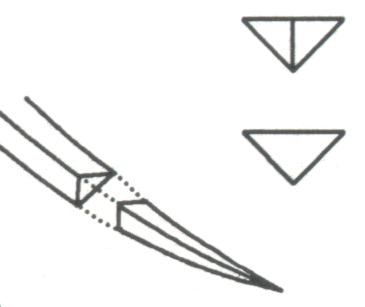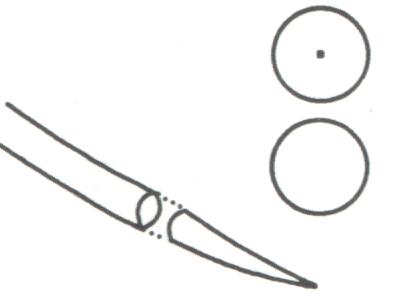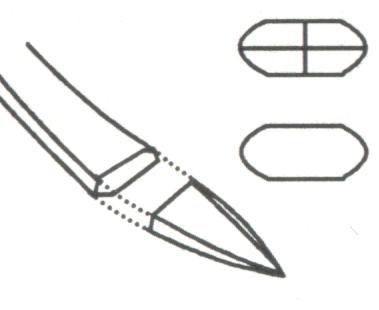|
configuration |
Cutting | Reverse cutting | Taper point | Spatula |
| Diagrams |  |
 |
 |
 |
| Configurations | *triangular with cutting
edge at the top *cuts at tips and edges
|
*triangular with cutting
edge at the bottom *cuts at tips and edges
|
*round and taper to
a point *cuts at the tip only |
*4 or 6 sided with
cutting edges on the side *cuts at tip and sides
|
| Properties | *suture canal extends
superficial to path of needle tip *may pull out tissue
|
* suture canal extends
deep to path of needle tip * ideal for oculoplastic
*accidental perforation
|
*atraumatic
*produces the smallest
*useful in iris repair |
*allow needle to split
the tissue plane and avoid accidental perforation *allow the needle to
*most commonly used
|